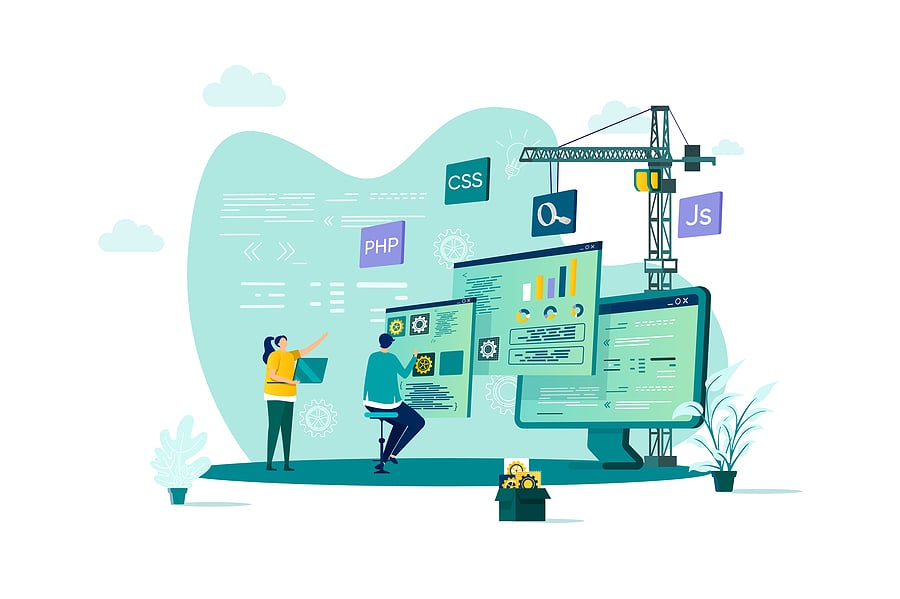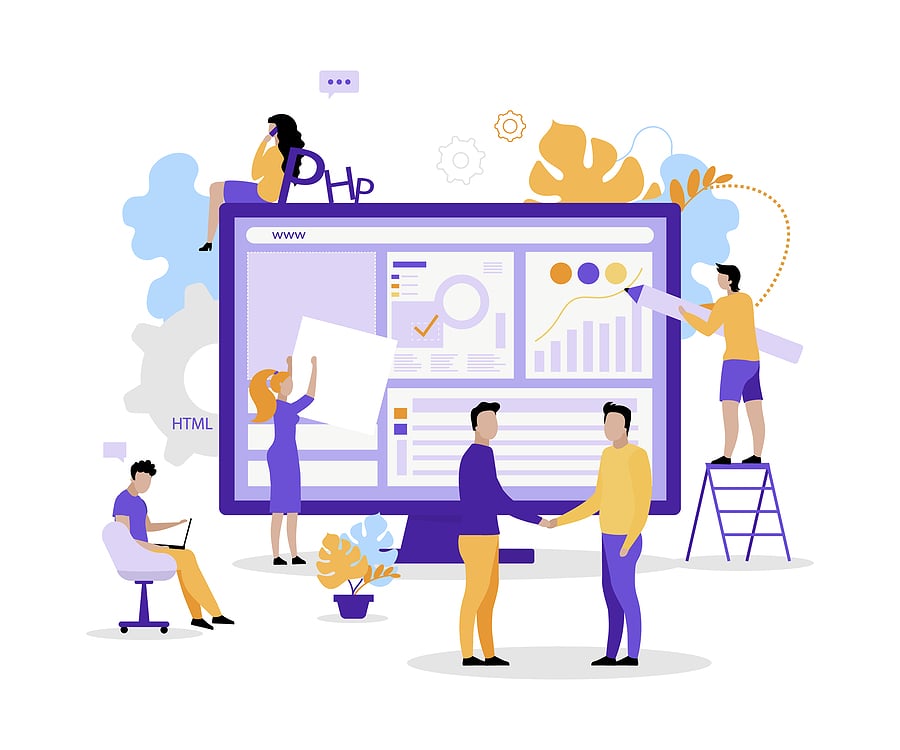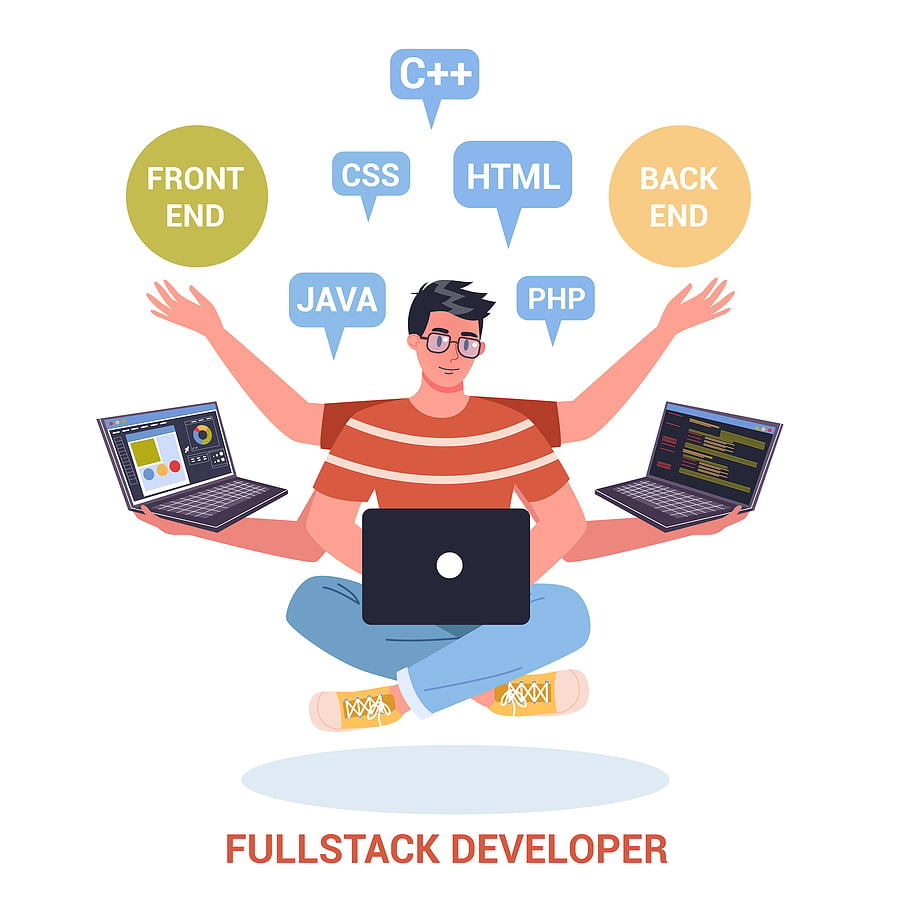Full Stack Development: What It Is and Why It Matters for Every Business
6 min read
Topic:
ASP.NET Development Services
Regardless of the industry that you're talking about, any organization that looks to either develop or outsource the creation of a new business software system must make every effort to make sure that their development team has the necessary experience with every element of the technology stack. Only then will they be able to bring these components together to form something far more valuable than they can be on their own.
An intimate knowledge of all the elements of the technology stack is crucial - as is an awareness of what questions to ask a development company partner to confirm that they are, in fact, the full stack developer they claim to be.
What is Full Stack Development?
Before you can fully grasp what “full stack development” is, you need to come to a better understanding of what a "stack" is in the first place.
Sometimes also referred to as the "solution stack," the stack is the technology and tools used on a given software project. A full stack web developer is one who has the experience and training needed to develop all of the elements of technology used in both the back and front ends of a web application. Larger organizations sometimes hire separate specialists to complete these various tasks, for example. However, more nimble organizations will rely on a full stack development company that can do it all - a "Jack of all Trades," so to speak.

What are the Components of Full Stack Development?
In an overarching sense, full stack development is all about creating fully functional, robust and scalable web applications. It's not just one skillset - it requires several skills, and several technologies, all working in tandem with one another. This is especially true when you're trying to develop something that will meet both the current and future needs of a business.
All told, there are a number of common components in a typical solution stack for a web application, including but not limited to ones like:
- Server Operating System. If you're working with a server (or any computer for that matter) an operating system is needed to manage the hardware elements of the server and the programs that are running on them. One good example of this type of technology in action is Windows Server. Both a web server and a database server will require operating systems to function.
- Web Server. This is the element of the stack that interacts with the web application and allows for the processing of all end user requests. When a user clicks on a button in a web application, an expected response is executed - this is because that request was processed by the web server. An excellent example of a web server would be Microsoft Internet Information Server, otherwise known as IIS for short.
- Backend Data Storage. This element is made up of the disk storage space in the stack, along with the relational database used to store and retrieve information. One industrial-strength database management system (also called a DBMS) is Microsoft SQL Server. For optimal performance, database servers should always be set up on their own dedicated hardware.
- Cloud Computing Services. These are solutions that give developers an almost unlimited level of scalability when it comes to the back end of a large web application. Amazon AWS and Microsoft Azure are two popular examples of cloud-based technologies. They both have the ability to generate virtual servers on-the-fly, thus making them flexible enough to meet ever-changing user demands.
- Backend Framework. This is a term that refers to the collection of tools, libraries and programming languages that are commonly employed on a server to develop web applications. The Microsoft ASP.NET framework is perhaps the best example of this. It lives on the web server and provides developers with the tools needed to create the server-side of a web-based application. In most cases, a developer will use Microsoft's Visual Studio Integrated Development Environment (IDE) to build these applications.
- APIs, or Application Programming Interfaces. This is a standard way to enable two (or more) software systems two share data amongst themselves via the Internet. Even though the technologies on either end of the connection may be completely different, it doesn't matter - an API is a standard that still allows for communication between two different servers; it’s the communication plumbing if you will. In most situations, a web application integration is a crucial part of effective corporate computing.
- Frontend Framework. This refers to the part of the web application that is run by the browser itself. By dividing the application workload between A) the user's computer and B) the server, greater performance can be achieved as opposed to delegating responsibility to one or the other. JavaScript is the programming language used by browsers. JavaScript can be used to send and retrieve data from the back end. JavaScript Frameworks such as AngularJS and React make it easier to build web applications that run on different devices. jQuery is another JavaScript library that provides a developer with a rich set of widgets that can be used to provide a better user experience. Bootstrap itself is an open-source library that provides a developer with a mobile responsive foundation of a great looking web application that will display and function correctly on all major browsers and devices.
- Frontend Languages. These include programming languages like HTML and CSS, both of which tell a browser how to both format and display web pages and other related data coming from the server in question. HTML dates all the way back to the origins of the Internet in 1989. CSS is a language used to tell a browser exactly how to format that HTML content.

The Benefits of Full Stack Development
Overall, having a well-rounded developer that possesses the depth of experience needed to understand the entirety of the technology stack is invaluable, regardless of the project you're talking about. Naturally, there will be more than one person engaged in the creation of any such application. Still, having access to this wide-ranging skill set will prove crucial as it allows for both A) a faster development timeline and B) a better chance at arriving at something that actually meets your needs.
Another major advantage of full stack development is that you simply get a better finished product. If you're using one developer who doesn't fully understand the back-end portion of the equation, for example, and a separate developer tasked with the front end, you may arrive at two pivotal elements that don't work well together. This is actually one of the most common reasons why applications degrade in performance over time as their complexity grows.
A full stack developer knows about both - allowing them to create something that is highly scalable and that offers peak performance, no matter what. As your organization grows, the application itself does the same - providing an investment that more than pays for itself over time.
Full Stack Developer Skills
All told, full stack developers will bring with them a comprehensive set of skills that include but are certainly not limited to the following:
- Business Analysis. They'll be able to understand your needs, your industry and its unique goals, all to better develop something that enables you to accomplish them more efficiently than ever.
- Software Architecture. A partner will be well-equipped to develop a solution that automates workflows in a way that frees up the valuable time of your employees so that they can focus on more important matters.
- Front End Development. They'll be able to create the type of user interface that employees enjoy using. They won't see it as a "means to an end," in other words.
- Back End Development. Your chosen partner will be able to lay the rock-solid foundation upon which a scalable, agile application can be built.
- Database Design. They'll be able to make sure that information is available anywhere, anytime and on any device - unlike the situation you would experience with something like a spreadsheet.
- Application Integration. They'll allow you to pull in data from other systems like enterprise resource management and customer relationship management tools via APIs, guaranteeing that all critical data is available in a single "source of truth."
- User Interface Design. This is crucial, as it helps guarantee a higher level of user adoption and acceptance.
- Cloud Computing. Corporations are moving to cloud solutions to have the flexibility and scalability they need for enterprise scale applications.
- Project Management and Communication. This element is often overlooked, but it's among the most important as it makes sure that your development partner keeps you in-the-loop at all times and that you stay aware of how far the project has come, where it currently stands and where it is headed moving forward. Software project failure usually happens because of poor communications or poor project management.

What to Look for in a Full Stack Developer
Any organization should always make it a priority to look at Full Stack Development partners with the experience outlined above. But more than that, they should also make sure that their full stack development company partner is easy to work with - meaning that they share the same business values that allow them to become an organic part of their team.
Most importantly, any partner you choose to work with should have solid communication skills. They should also have the aforementioned depth of experience - something that will lower development costs and increase the speed at which a viable solution is available to users. To learn more about exactly what to look for in a full stack developer, read the article "Keene Systems Guide to High Performing Business Applications."
In the end, full stack development resources are a core competency needed by any business that itself intends to develop and support business web applications. In most situations, organizations know that they need to create and maintain these systems in order to enable growth. Therefore, having a scalable team - or a trustworthy partner - with full stack development expertise can help create the resources they need to thrive.
It's important not only as a strategic asset for your business now, but as it continues to grow and evolve over time. Business systems must change with the organization itself and provided that you're able to find the right full stack development company partner, you'll go a long way towards accomplishing precisely that.
To find out more information about our ASP.NET software development outsourcing capabilities, or if you’d like to discuss custom software development, speak with Keene Systems' CEO, Lance Keene click here to book a call with him. You can also download our eBook - Why ASP.NET Development Services Fuels Business Growth - to learn more about this essential topic.


